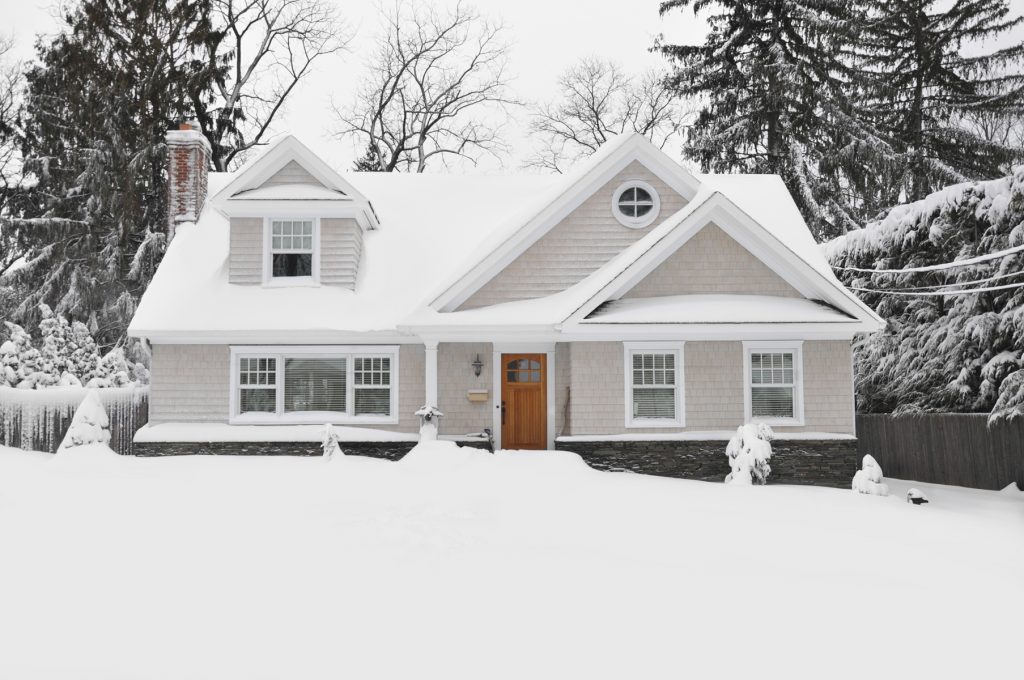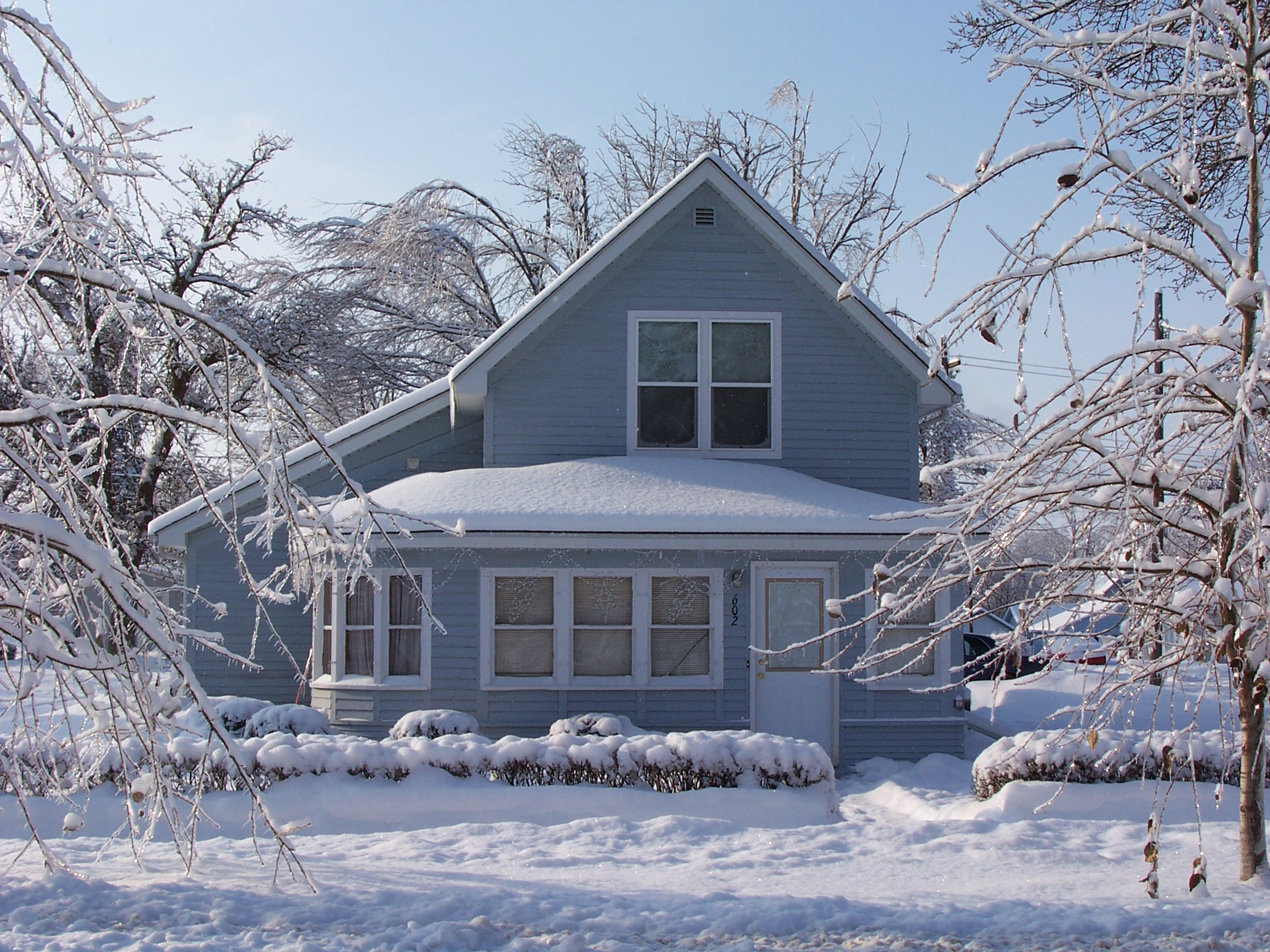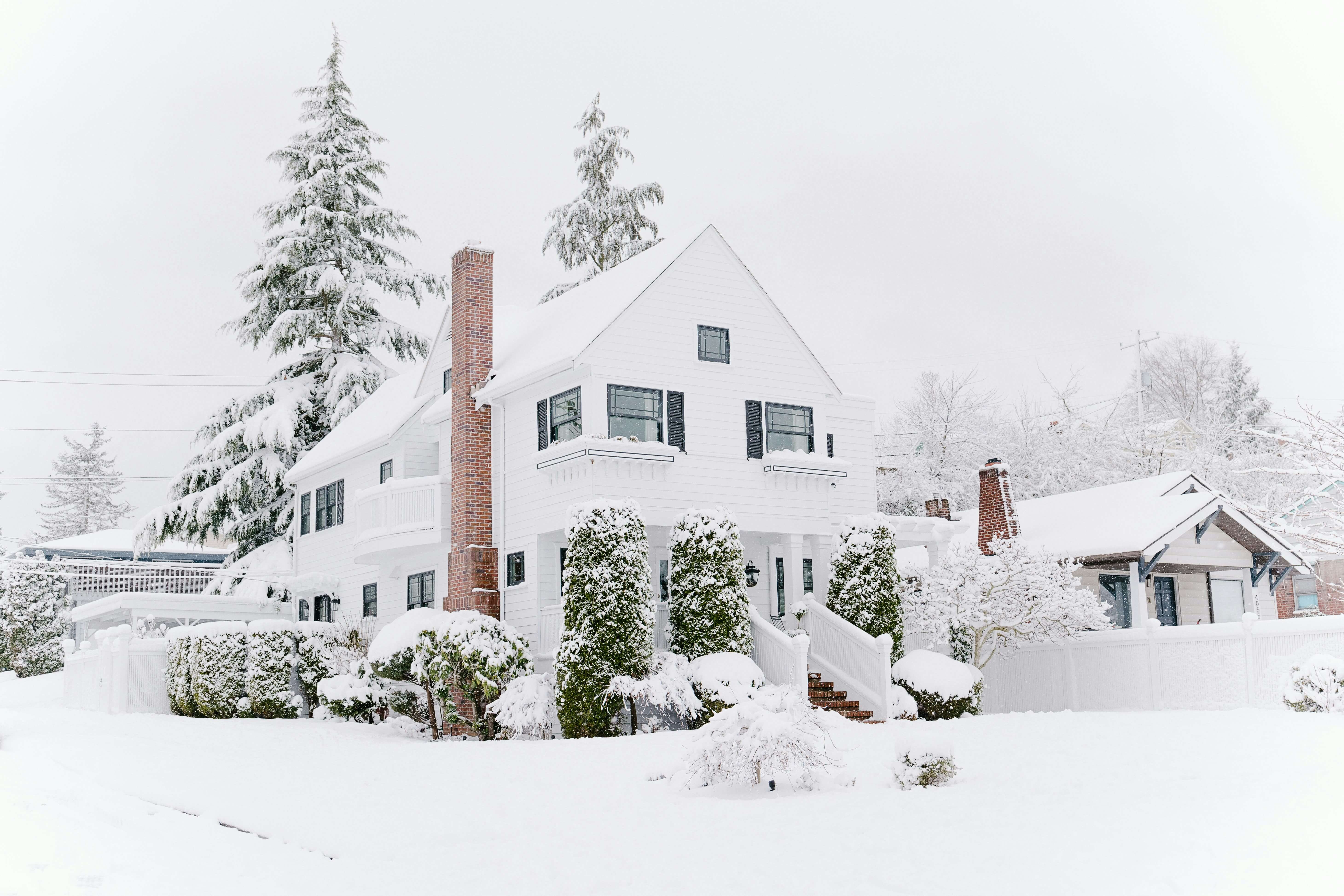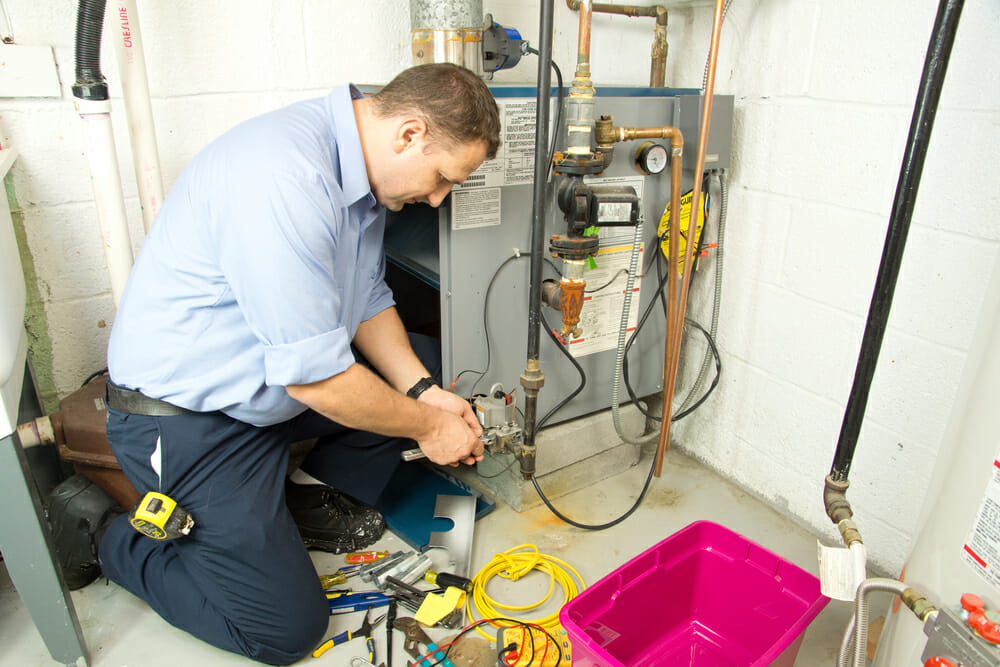What Size Furnace Do I Need in Michigan?
For most detached Michigan homes (which tend to be between 1,600–2,200 ft²) in average condition, a ballpark heating capacity is:
- ~50,000–70,000 BTU/h (output) for “average” Lower Peninsula counties.
- It can be lower for well‑sealed homes or lake‑moderated areas, and higher for drafty/older homes or Upper Peninsula counties that see colder temps during winter.
You can use Modernize’s furnace size calculator to get an estimate and/or read on for Michigan-specific factors to consider.
What Can Move You Up or Down This Range?
- Colder county: If your county’s coldest winter day is ≤ 0 °F (many U.P. counties), expect ~10–25% more BTU/h than a county whose coldest day is 5–6 °F.
- Older/leaky home: Pre‑1980 homes with limited air‑sealing/insulation can need ~15–40% more BTU/h than a code‑level home until weatherization is done.
What Are BTU/h? How Are They Related to Capacity?
A BTU is a unit of heat. BTU/h tells you how much heat a furnace can deliver per hour. Think of it like the heater’s “horsepower,” but for warmth.
In Michigan, our winters are long and especially cold compared to many other parts of the U.S. Your Furnace needs enough BTU/h to keep up on the coldest days.
Input vs. Output BTUs
One important note as you shop for furnaces: Many furnace model stickers show input BTUs, but you need to size to output.
- Input BTU refers to much fuel energy the furnace burns.
- Output BTU is how much heat actually reaches your rooms.
If you only see the input BTU on the model sticker, you can calculate output using the formula Input × Annual Fuel Utilization Efficiency (AFUE), a percentage that will also be shown on the sticker.
AFUE Defined
AFUE is the percentage of fuel that becomes useful heat over a season (e.g., 96% AFUE means 96% of the fuel energy warms your home; ~4% is lost in flue gases and other losses). You can read our blog post about understanding furnace AFUE ratings for more information.
Finding the Output: An Example
If you are looking at a furnace that has a 100,000-input BTU and AFUE of 96%, you would multiple 100k by 96 to get a 96,000 BTU/h output.
What Info Do I Need to Calculate Furnace Size For My Michigan Home?
To get a ballpark estimate, you’ll need the following:
- Heated square footage. That is, how many square feet of your home do you want to heat?
- Your county or ZIP. This is used to determine your statistically typical coldest outdoor temperature. Formally, this number is called a 99% winter design temperature. We have a table below showing the winter design temperature for every country in Michigan.
- Home condition. By this, we mean how old is your home, what are the insulation levels like, how high quality are your windows, etc. We’ve bucketed homes into three categories here:
- Well-insulated. Homes with recently replaced windows and doors, homes with no air leaks, and new build homes all fall into this category.
- Typical. Homes built between the 1990s – 2000s that have not replaced a significant number of windows will be in this bucket.
- Drafty. Homes built in the 1980s or earlier, homes that have air leaks around the windows and doors, and homes with old windows would all be considered “drafty.”
- Planned upgrades. If you’ll add insulation or seal ducts soon, size to the improved home, not the home’s current condition.
Michigan Heating Design Temperature
In the sizing table below, we categorize needed furnace capacity by milder counties (meaning, the coldest day is 7 °F or above), average counties (1–6 °F), and colder counties ( 0 °F or below).
If you don’t know where your county falls, ENERGY STAR publishes a county table that references ACCA/ASHRAE design data. Use the heating column for sizing to find your heating design temperature.

Your Furnace Size Is…
If your home is well‑ insulated, use the low end of the band. If it’s older/drafty, use the high end, or add +15–35% to the result until you weatherize. Note that all ranges are BTU/h output.
| Square Footage | Milder (≥ 7 °F) | Average (1–6 °F) | Colder (≤ 0 °F) |
|---|---|---|---|
| 1,200 | 26,400–36,000 | 30,000–42,000 | 36,000–48,000 |
| 1,600 | 35,200–48,000 | 40,000–56,000 | 48,000–64,000 |
| 2,000 | 44,000–60,000 | 50,000–70,000 | 60,000–80,000 |
| 2,400 | 52,800–72,000 | 60,000–84,000 | 72,000–96,000 |
| 3,000 | 66,000–90,000 | 75,000–105,000 | 90,000–120,000 |
Tip: ENERGYSTAR has found that leaky ducts often cause losses of 20-30%. Fixing your ducts can significantly reduce the furnace capacity you need.
Why “Right‑Sized,” Not “Super‑Sized”
Oversized equipment tends to short‑cycle, which can increase wear and reduce comfort and efficiency. Right‑sizing fights those problems. In Michigan, the long winter means those benefits add up.
Best Furnace Types for Michigan
For cold, long winters like those in Michigan, Modernize recommends the following furnace types:
- 95–99% AFUE modulating gas furnace (variable‑speed ECM blower)
These provide the best comfort and steady temps. They are also known for being very quiet. This type of furnace is excellent for cold, long heating seasons and aligns with the 95% AFUE federal minimum effective Dec 2028 for new non‑weatherized gas furnaces. - 95–96% AFUE two‑stage gas furnace (variable‑speed ECM)
A Two-stage has furnace hits the sweet spot of value and comfort for many homeowners. These furnaces run on low most of the time to provide even heat and ramp up only on the coldest nights. - 95–96% AFUE single‑stage condensing gas furnace (ECM blower)
This is a good, budget‑friendly choice for smaller or well‑sealed homes. Be careful not to oversize. - Dual‑fuel (cold‑climate heat pump + gas furnace)
The heat pump covers milder weather efficiently and then the furnace takes over in deep cold. That means you get lower utility bills plus great comfort. Consider this option if you want A/C upgrades too.
Best Furnace Brands for Michigan
Modernize consistently reviews and re-reviews the best brands for many home improvement projects. This includes the best furnace brands, which are chosen based on average needs across the country.
When choosing the best furnace brands and units for Michigan homes, we picked some of our favorites that are widely available, have strong cold‑weather lineups, and offer high‑efficiency (95%+) models.
Trane
With some models delivering up to 97.3% AFUE, Trane is a truly great choice for homeowners looking for high-efficiency furnaces. They offer single-stage, two-stage, and variable-speed options. They also have a reputation for being very durable. Modernize’s review of Trane furnaces can tell you more.
- Recommended model: S9V2 (96 Two‑Stage, Variable‑Speed). This two‑stage furnace delivers up to 96% AFUE with an ECM blower. It is durable, quiet, and a strong all‑rounder for MI homes.
Lennox
The high-efficiency furnaces made by Lennox work incredibly well for cold climates, but that performance comes at a high price point. You can learn more by reading Modernize’s review of Lennox furnaces.
- Recommended model: SLP99V (Signature Collection). If you’re choosing Lennox for their efficiency, then consider what is perhaps their most powerful model. This variable-capacity furnace provides up to 99% AFUE. That is some top‑tier efficiency and great comfort for long Michigan winters.
Carrier
Carrier takes the top spot on our national list and would also be an excellent choice for homes in Michigan. You can read Modernize’s review of Carrier furnaces to learn more about why we love them.
- Recommended model: Infinity® 98 (Model 59MN7). This model uses a modulating gas valve as well as Greenspeed intelligence, has up to 98.5% AFUE, and is regarded as being one of the best furnaces out there for cold climates.
You can check out reviews for furnaces, heat pumps, and other HVAC systems by visiting the Modernize Review Hub.
How Much Does a New Furnace Cost?
The national average cost range for a new furnace is $4,000 to $9,998. In Michigan, the brand you choose, the capacity you need, and how efficient you want your furnace to be can all impact cost. Given the cold climate, it’s easy to wind up on the higher side of that national price range. Make sure you check for rebates with your energy supplier to help offset cost.
Need Help Finding a Furnace Installer?
You can read reviews, find special offers and promotions, and check out HVAC contractors in Michigan by following the link or by clicking the button below. Just answer a few questions about your project, and we’ll pair you with up to four contractors for free quotes so you can find the best price on your new furnace.
Compare top-rated HVAC pros in your area.
Read real homeowner reviews, explore qualifications, and view promotions. Modernize makes it easy to browse professionals and find one that will be perfect for your project.






